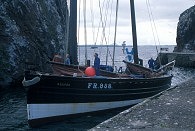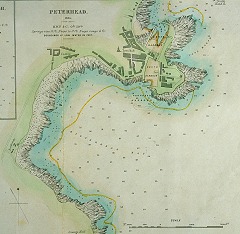Back to start | Boat Design | Next
Coping with stormy weather: harbours

Captain Washington also talked about harbours in his report. He recommended that many be improved. For fishermen trying to escape a storm, entering a harbour was one of the greatest dangers. Many harbours were tidal. This meant that the boats could only enter during high tide. They also often had very narrow entrances that took great skill to navigate, particularly during a storm. Many of the East Coast fishing disasters describe boats wrecked within sight of land while trying to enter the harbour. Even today, we can see why harbours could be so dangerous.

Peterhead was one of the worst affected towns following the storm of August 1848. Thirty boats were lost, 33 damaged and 31 Peterhead men drowned. Many had been trying to run into the harbour. In Peterhead Harbour, boats had often been allowed to lie close to the pier heads. This made the already narrow entrance even more difficult to take. A steamer and several other vessels were lying along the south pier on the night of the storm.
The building of safe harbours was very important. A safe harbour made it easier for the fishermen to return to port in bad weather, whatever the state of the tide. If the fishermen had warning of an approaching storm, they could run to an accessible harbour if they were caught out. This could substantially reduce the loss of boats and lives. As boats were built bigger during the 19th century, there was an even greater need for better harbours. People began to recognise this need and many East Coast towns received funds to make harbour improvements. The safe harbours were called 'Harbours of Refuge'.
Back to start | Boat Design | Next